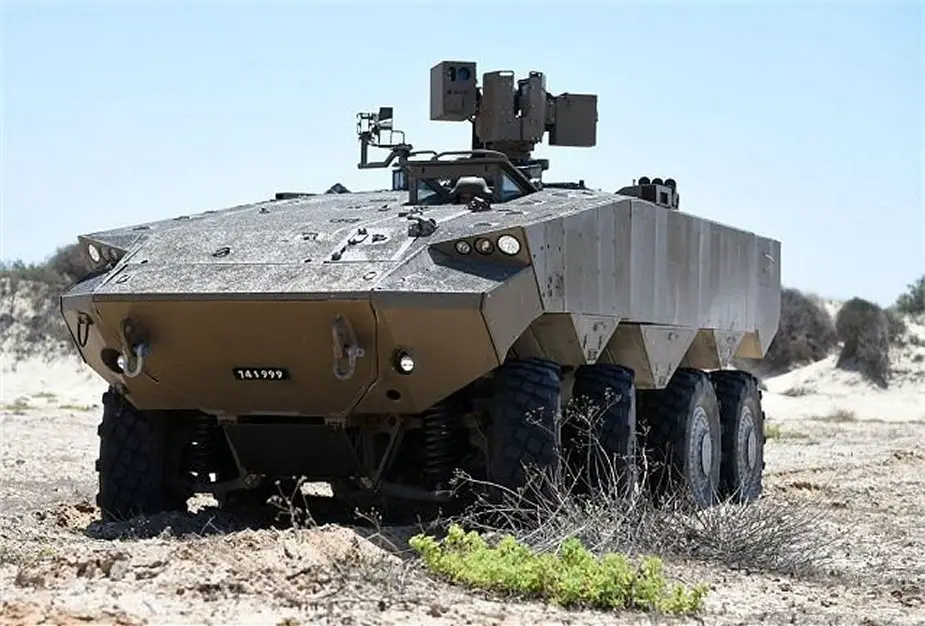The “Eitan”, the IDF’s first wheeled armored personnel carrier (APC), is about to enter service. Rapidity was obviously behind this purchase, aiming at improving the ability of infantry units to move from place to place.

Eitan, first wheeled APC to enter service in Israel Defense Force (Picture source: Israel Defense Force)
Together with the tracked “Namer” APC, the Eitan is part of the IDF’s drive to modernize its armored vehicles fleet, make them immune to Hamas and Hezbollah armor-piercing weapons, and create new strengths on the battlefield. The IDF’s older APCs, like the M113, which dates back to the Vietnam war ear, have been found to be obsolete, vulnerable and inadequate.
The Eitan is an Israeli-made 8x8 armored vehicle personnel carrier which was unveiled in August 2016 by the Israeli Ministry of Defense. It was developed by the Ministry of Defense Tank Administration in cooperation with the IDF Ground Forces. The vehicle was designed following the lessons learned in Gaza during the operation “Protective Edge” carried on in 2014. It's a new vehicle offering a new configurable multirole platform.
Equipped with a 750hp engine, the Eitan can reach 90 km/h on roads. It will also come with an active protection system that can intercept threats like missiles and rocket-propelled grenades – the types of weapons that proved deadly for older vehicles. An Eitan carries 12 soldiers.
Last April, drivers from the 50th Battalion underwent intensive training with the APC. They spent a week in operational driving conditions and brought the Eitan to a battalion-wide training exercise.
“The amount of times spent in combat zones is growing. We want to be less dependent on the home front, and less dependent on the need to bring logistics from outside the battle zone,” Major Liad Cohen, Technology and Maintenance Officer in the Nahal infantry brigade’s 50th Battalion, said. “This is the assumption on which we are building our combat doctrine,” he added. “We understand that the next war will not be like the last war. In the next war, we want a relevant vehicle that will deliver real advantages over the enemy.”














